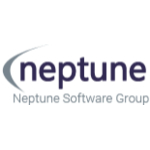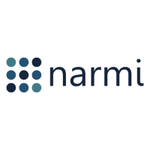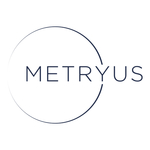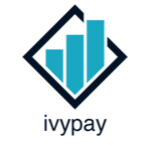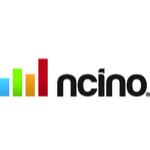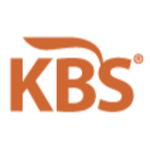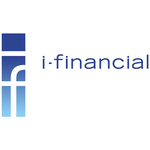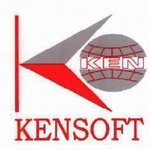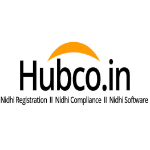TechnologyCounter provides genuine, unbiased real user reviews to help buyers make informed decisions. We may earn a referral fee when you purchase through our links, at no extra cost to you.
List of 15 Best Banking Software
Showing 1 - 15 of 97 productsBankMill, a revolutionary financial platform designed to make managing your money seamless and hassle-free. With BankMill, you can easily access your accounts, make transactions, and track your finances all in one place. Say goodbye to traditional ba...Read BankMill Reviews
Rubikon is a groundbreaking software designed to revolutionize the way businesses manage their projects and tasks. With its intuitive and user-friendly interface, Rubikon aims to streamline workflow, increase productivity, and enhance collaboration f...Read Rubikon Reviews
FinCraft is a software designed to transform the way businesses manage their finances. Say goodbye to the traditional methods of financial management and open the door to a seamless is a process with FinCraft. This innovative tool is tailored to meet...Read FinCraft Reviews
Ababil is a software that empowers businesses to streamline their operations and boost productivity. With its user-friendly interface features, Ababil provides an efficient solution for managing tasks, analyzing data, and making informed decisions. S...Read Ababil Reviews
Narmi is a fintech software that is revolutionizing the way financial institutions operate. With its advanced features design, Narmi is setting a new standard for the industry. Streamlining processes, enhancing security, and improving the overall cus...Read Narmi Reviews
CAVU is a software solution designed to revolutionize your business operations. With its user-friendly interface features, CAVU streamlines processes, increases efficiency, and drives growth. Say goodbye to cumbersome tasks and hello to a seamless an...Read CAVU Reviews
Ivypay is a payment software designed to simplify your financial transactions. With a user-friendly interface features, Ivypay is changing the way businesses and individuals send and receive payments. Say goodbye to complicated processes and hello to...Read Ivypay Reviews
Mambu is a and innovative software solution that revolutionizes the way financial institutions operate. With its user-friendly interface features, Mambu offers a seamless experience for managing loans, deposits, and other financial products. Its a ga...Read Mambu Reviews
nCino is a banking software that is transforming how financial institutions operate. With its user-friendly interface and innovative technology, nCino streamlines processes, increases efficiency, and improves customer experience. Designed specificall...Read nCino Reviews
Keybank is a leading financial institution that has been providing reliable is a banking services for over 190 years. With a strong commitment to customer satisfaction, Keybank offers a wide range of products and services to meet the diverse needs of...Read Keybank Reviews
BankWare is a software designed to streamline banking processes and enhance financial management. With its user-friendly interface features, BankWare offers a seamless experience for bankers and customers alike. A reliable is a solution, BankWare is...Read BankWare Reviews
Ken-CBS, is a solution for all your business needs. Designed and developed with utmost precision, Ken-CBS streamlines tasks and empowers your organization with technology-driven solutions. With its user-friendly interface and unparalleled capabilitie...Read Ken-CBS Reviews
Nortridge is a versatile and innovative software designed to streamline financial operations for businesses of all sizes. With its user-friendly interface and powerful features, Nortridge aims to simplify loan management, customer data tracking, and...Read Nortridge Reviews
MFBOS the ultimate business operating system designed to streamline your operations and boost productivity. With its user-friendly interface features, MFBOS is the perfect tool for businesses of all sizes looking to optimize their processes and achie...Read MFBOS Reviews
Hubco Nidhi the innovative software solution designed to streamline and simplify all your financial needs. Say goodbye to complex and time-consuming processes with Hubco Nidhi, managing your funds has never been easier. Discover a new level of effici...Read Hubco Nidhi Reviews
- What Is Banking Software?
- Top Reasons Why Businesses Need Banking Software?
- What Are the Top Key Features of Banking Software?
- What Are the Top Benefits of Banking Software?
- What Are the Steps to Choose the Right Banking Software?
- What Are the Types of Banking Software for Different Industries?
- What Are the Technology Trends for Best Banking Software?
- What Are the Deployment Options for Banking Software?
What Is Banking Software?
Banking software is software that is used to automate operations or processes within a bank. It usually includes functions like client information management, loan and deposit processing, financial transaction tracking, and reporting.
Digital Banking software may be created in-house by the bank or given by a third-party technology provider as an enterprise resource planning (ERP) solution. Banking industry software provides a framework for carrying out numerous day-to-day tasks.
Firstly, it can serve as a store for consumer records and pertinent data. This might include everything from account information like balances and transactions to client contact information and other personal information.
Second, it enables financial transactions to be completed electronically, reducing time-consuming paper-based processes.
Third, banking software can give the capabilities needed to process loans and deposits, making it easier to track customers' credit scores and provide ongoing help.
It can also help the bank track financial transactions and activity, which is required for regulatory compliance.
To summarise, digital banking software is a technology that banks employ to streamline and manage their daily operations. It manages customer information, tracks financial transactions, and even facilitates loans and deposits. Furthermore, it enables banks to remain compliant with regulatory standards.
Top Reasons Why Businesses Need Banking Software?
1. Automates accounting processes: Top banking software eliminates manual data entry, saving time and reducing errors.
2. Streamlines financial reporting: Banking system software aggregates data into structured reports in a unified format, saving time and reducing errors.
3. Centralizes data: Banking software stores and organizes all financial data in a secure location, simplifying access and retrieval.
4. Enhances customer service: Digital banking software allows businesses to offer better customer service through more efficient transactions.
5. Improves compliance: Banking system software ensures compliance with local and international regulations, reducing fines and penalties.
6. Enhances security: Banking software ensures automated encryption and backup of data to protect against unauthorized access.
7. Minimizes fraud loss: Banking industry software includes fraud detection tools and automated risk management procedures to reduce fraud losses.
8. Reduces transaction costs: Banking software reduces the cost of processing transactions by providing more efficient payment processing.
9. Increases credit: Banking system software allows businesses to access credits on favorable terms and monitor their credit usage.
10. Enhances forecasting ability: Banking industry software provides analytical tools to enable businesses to better forecast their cash flows and make informed financial decisions.
11. Facilitates decision making: Banking software provides businesses with access to real-time data, helping them make informed financial decisions.
12. Improves data access: Top banking software allows businesses to monitor and analyze financial performance, facilitating better decision making.
13. Enhances customer data: Banking system software provides businesses with customer data used to generate more accurate customer profiles and targeted products.
14. Enhances customer segmentations: Banking industry software enables businesses to segment customers for better service and targeted products.
15. Provides marketing insights: Digital banking software provides insights into spending trends, helping businesses adjust their marketing strategies accordingly.
What Are the Top Key Features of Banking Software?
The top key features of cloud-based banking software include:
1. Online Banking: Customers can securely access their banking accounts online, check balances, see statements, make payments, execute transfers, and more.
2. Account Security: To protect user data, digital banking software should contain layers of security such as firewalls, encryption, and authentication methods.
3. Payment Processing: This service enables consumers to move funds instantly or swiftly process credit and debit card transactions.
4. Data Analysis: To obtain insights and improve decision-making, cloud banking software should give customer-level data and banking analytics.
5. Automated Reporting: This feature allows banks to save time and resources by automating the generation of reports and statements in various formats.
6. Compliance Management: Banking industry software should have capabilities to assist with regulatory compliance needs such as KYC and AML records maintenance.
7. Money Transfer: This tool allows clients to securely move money across institutions or accounts.
8. Account Services: Customers should be able to create and manage their banking accounts, order services such as debit cards or cheque books, and examine banking service details via cloud banking software.
9. Fraud Detection: To help limit the danger of fraudulent behaviour, digital banking software should incorporate a robust fraud detection system.
10. Mobile Banking: Customers can access their banking accounts using mobile devices such as phones and tablets.
What Are the Top Benefits of Banking Software?
1. Improved Financial Efficiency: Banking software lowers human entry errors and streamlines financial procedures, allowing for more accurate financial reporting.
2. Increased Information protection: To secure customer data and online operations, the best banking software frequently contains levels of protection such as encryption, authentication, and authorization.
3. Improved Compliance: Top banking software can assist organisations in meeting regulatory obligations such as auditing to guarantee correct reporting and handling of consumer data.
4. Enhanced Customer Experience: Cloud banking software can provide a more personalized and convenient banking experience to clients. Customers, for example, can utilise mobile apps to securely access banking services from anywhere.
5. Enhanced Collaboration: Banking industry software can facilitate communication and collaboration among teams or departments within an organisation, assisting in the streamlining and efficiency of operations.
6. Improved Insights: Cloud banking software can develop and deliver useful data on clients and their behaviours, allowing organisations to provide better service to their customers.
What Are the Steps to Choose the Right Banking Software?
1. Identify your banking system requirements: Determine and document the functionality, security, and features that your preferred banking software must provide.
2. Research Meaningful Solutions: Investigate various best banking software and read reviews to see which platforms have the features and capabilities that best meet your demands.
3. Compare Vendors and Platforms: Evaluate various vendors and platforms against your desired requirements to identify the best cloud-based banking software for you.
4. Evaluate and Test Platforms: Take advantage of free trials or contact cloud banking software suppliers to schedule a demonstration of their program.
5. Check Security and Compliance Requirements: Take into account any regulatory requirements as well as any security needs for maintaining consumer data.
6. Make a Decision: After considering these factors, you should be able to make a decision on the finest cloud banking software for your business.
What Are the Types of Banking Software for Different Industries?
Depending on the user's requirements, a range of cloud banking software solutions are offered for various industries. These services are typically classified into three categories: consumer banking, corporate banking, and online banking.
1. Consumer Banking Software - This sort of software often caters to individual banking customers, offering features and tools to help people manage their finances, such as mobile banking apps, internet banking, account management tools, budgeting software, and more.
2. Corporate Banking Software - This sort of cloud-based banking software is specifically created for corporate banking customers, offering features and tools such as portfolio management, trading, and Lombard lending. It also offers analytics, monitoring tools, and other services to customers.
3. Online Banking Software - This sort of top banking software is meant to be accessed and managed via the internet, allowing consumers to access and manage their accounts without having to visit a physical branch. Account management, bill pay, and money transfers are common functions. The specific characteristics of each sort of banking industry software will differ depending on the business and the needs of the consumer.
What Are the Technology Trends for Best Banking Software?
The technology trends for the best banking software are:
1. Mobile banking: Mobile banking is growing increasingly popular as the most cost-effective method for banks to provide services to their consumers. Banks are utilising mobile technology to deliver features such as online banking, mobile payments, and even peer-to-peer (P2P) payments to its consumers.
2. Cloud Computing: Cloud computing is changing the way banks store and handle massive volumes of data. Banks use the cloud to securely store data and provide services to clients such as automated data backups, cloud-based analytics, and artificial intelligence.
3. AI and ML: From fraud detection to customer service, artificial intelligence (AI) and machine learning (ML) are increasingly being employed in banking. Banks are using AI and machine learning to automate procedures, swiftly analyse massive volumes of data, and give clients with more personalised and sophisticated services.
4. Blockchain: Banks are using blockchain technology to make transactions faster, cheaper, and more secure. Banks are using blockchain technology to simplify payments, facilitate asset transfers, and generate digital identities, among other things.
5. Data Security: Due to the heightened risk of data breaches, banks are taking security measures more carefully. Banks are deploying cutting-edge security technologies and practises like as encryption, identity identification, and two-factor authentication. These are the current technological trends that the best banking software should incorporate in order to remain competitive.
What Are the Deployment Options for Banking Software?
Banking software deployment choices vary depending on the institution's size, complexity, and scalability requirements. On-site software installs, Software-as-a-Service (SaaS), cloud deployment, virtual machine deployment, and web-based applications are the most commonly utilised deployment solutions for banking applications.
On-site software installation entails installing and operating applications on local servers. This technique necessitates the actual installation of the programme and gives the user direct control over their system. SaaS (Software as a Service) is a software delivery mechanism that allows customers to access applications hosted in a shared cloud environment.
The cloud-based banking software and infrastructure are typically owned and maintained by the service provider. A cloud deployment enables a user to store, manage, and process data on shared cloud resources. This type of setup allows for scalability while also reducing the need for further hardware investments.
Virtual machine deployment is a quick and low-cost alternative for hosting applications in cloud-based, virtualized environments. It also allows the user to customise their own virtual environment without requiring hardware upgrades.
Finally, web-based apps are software that runs in a browser, allowing for quick and easy banking software deployment. This form of software enables the user to access an application from any device that has an internet browser, allowing it to be accessed from anywhere.

